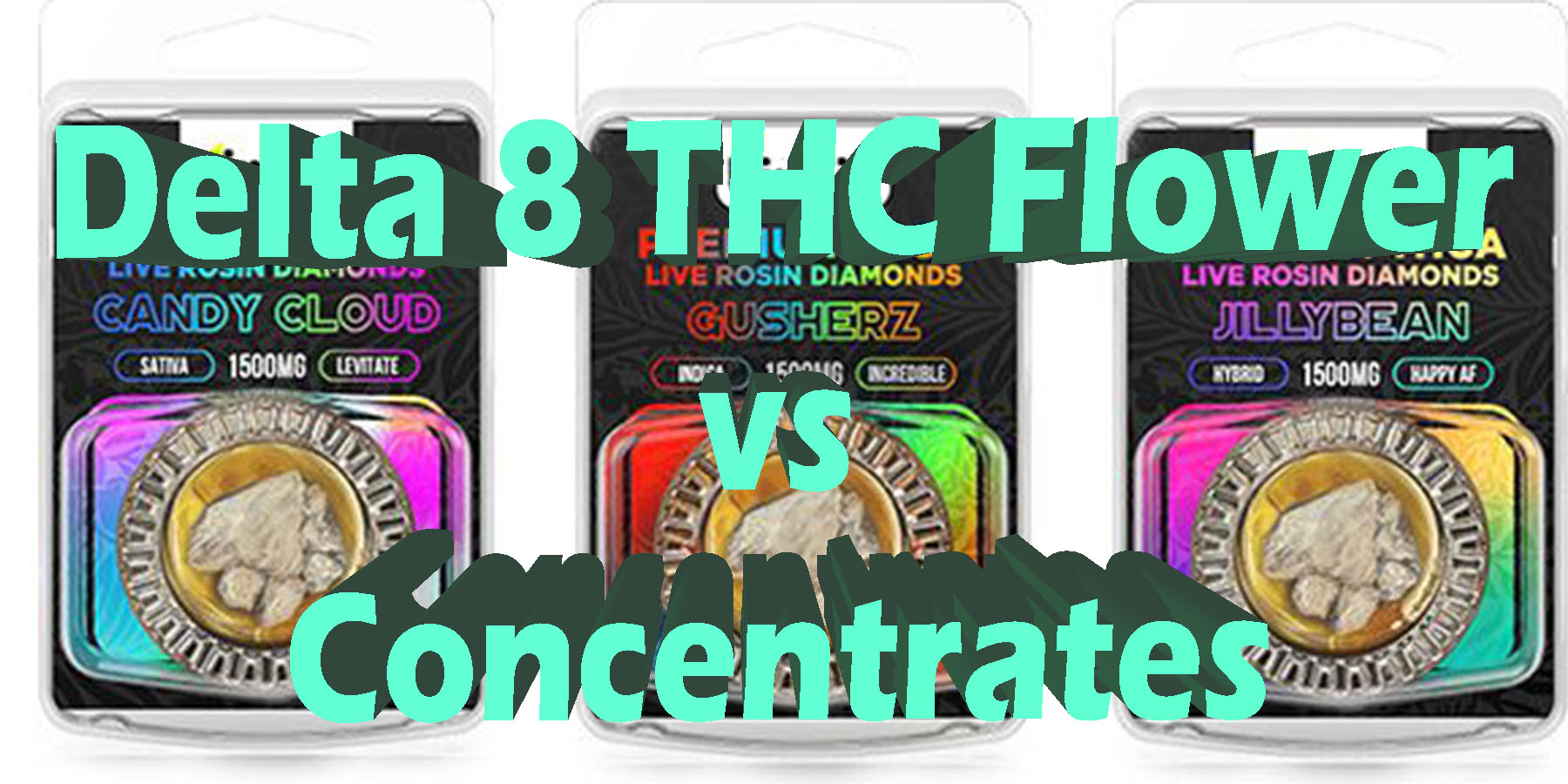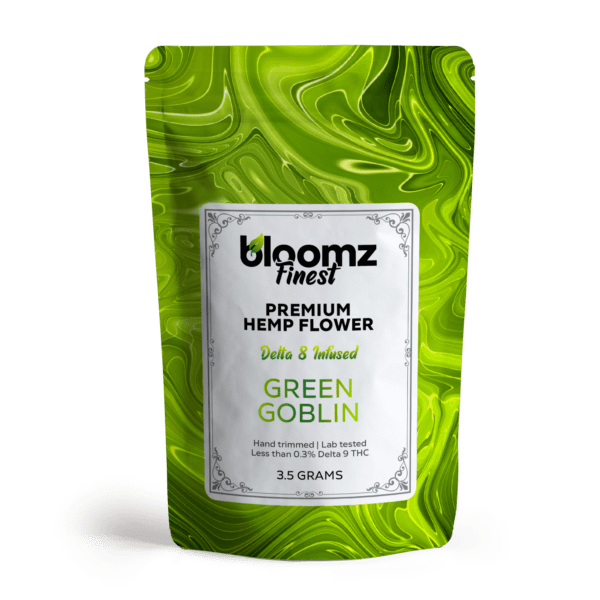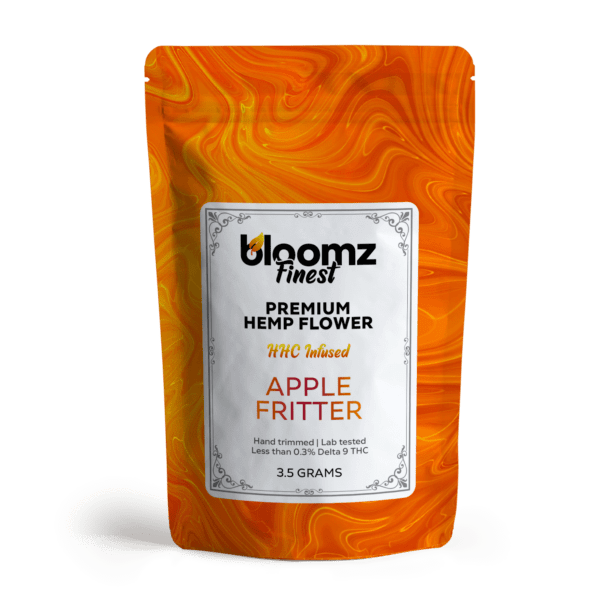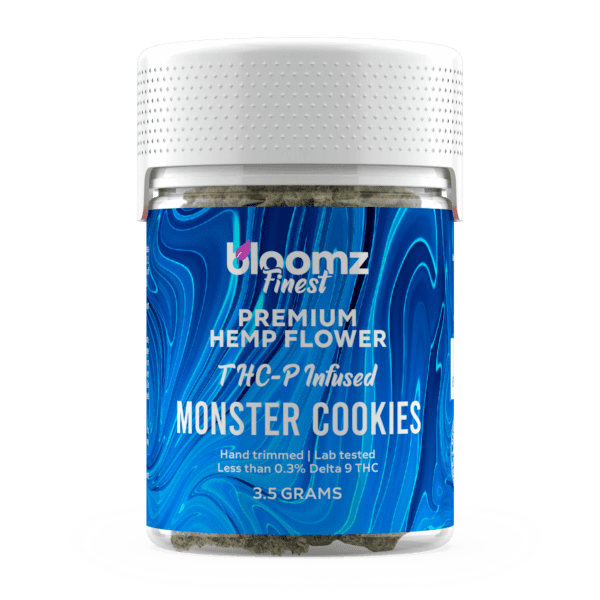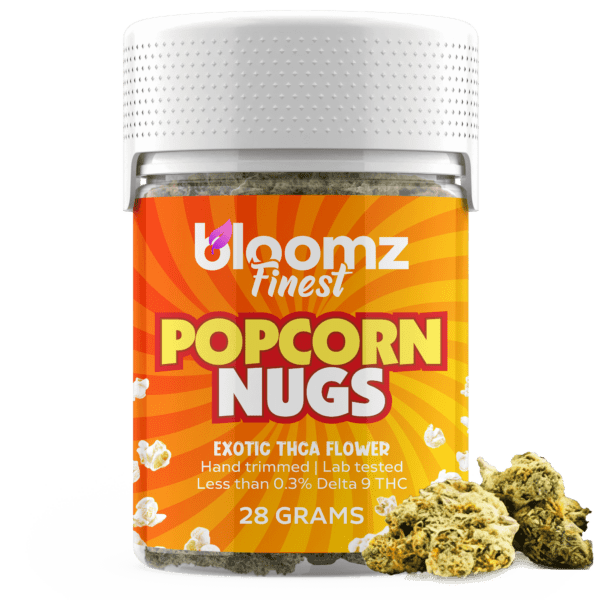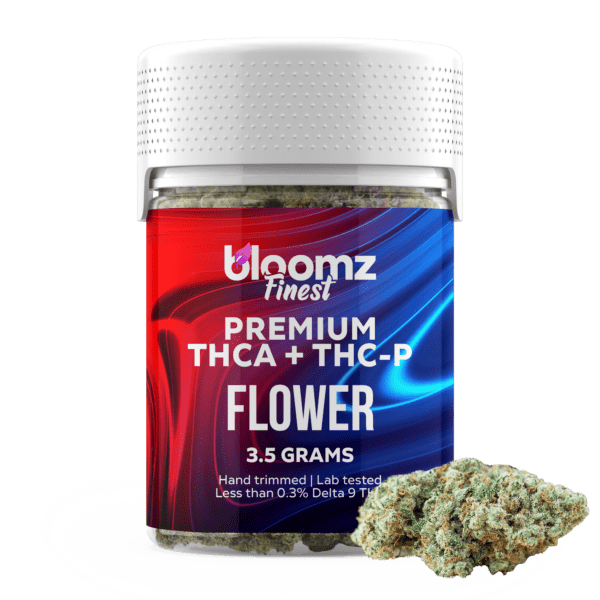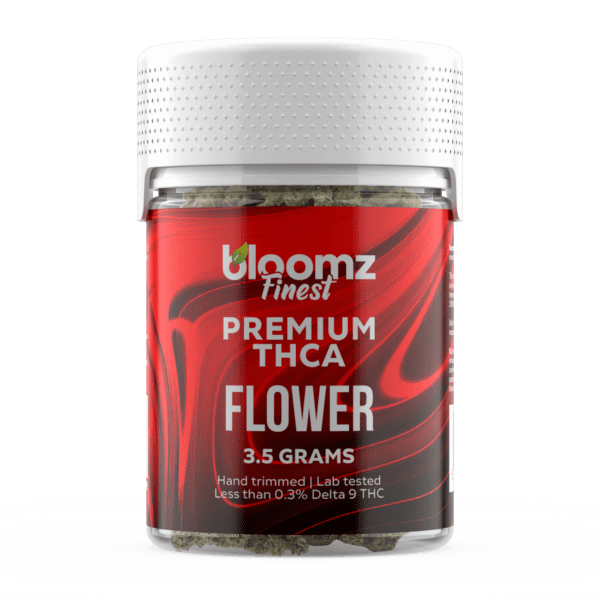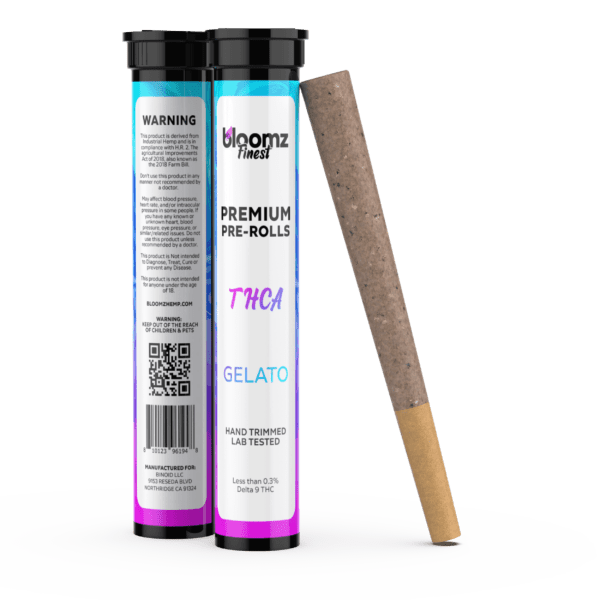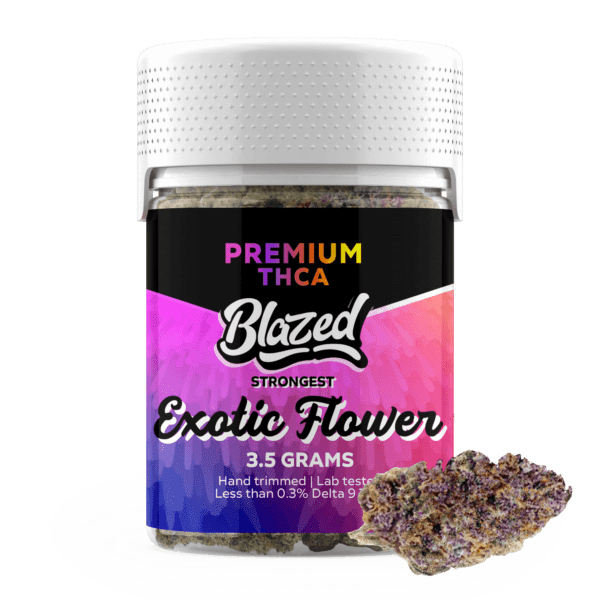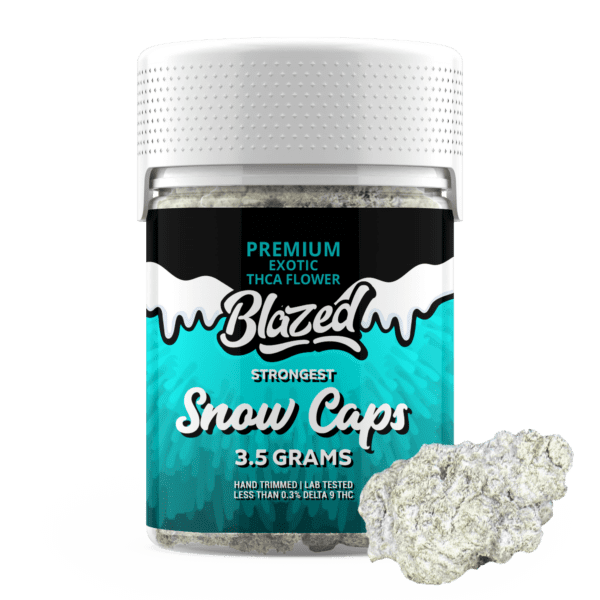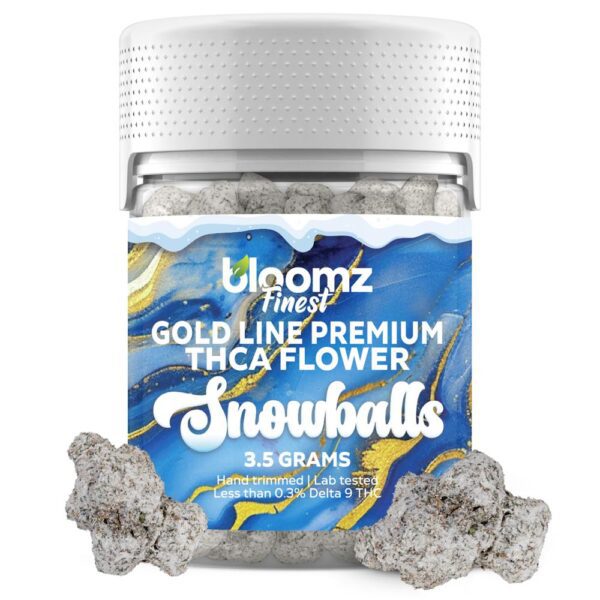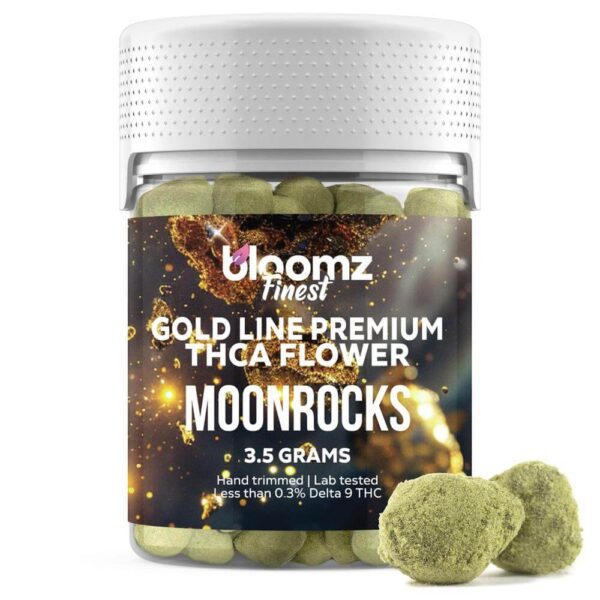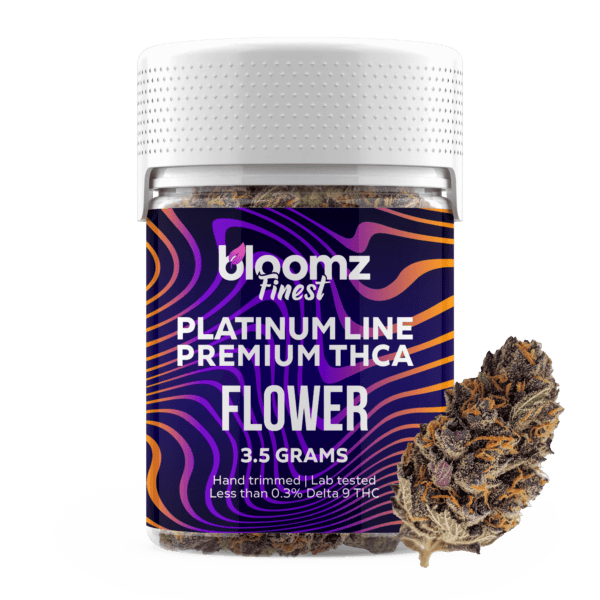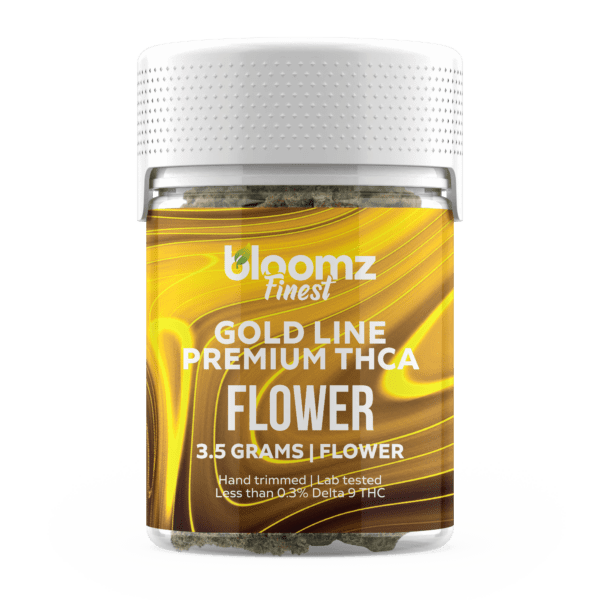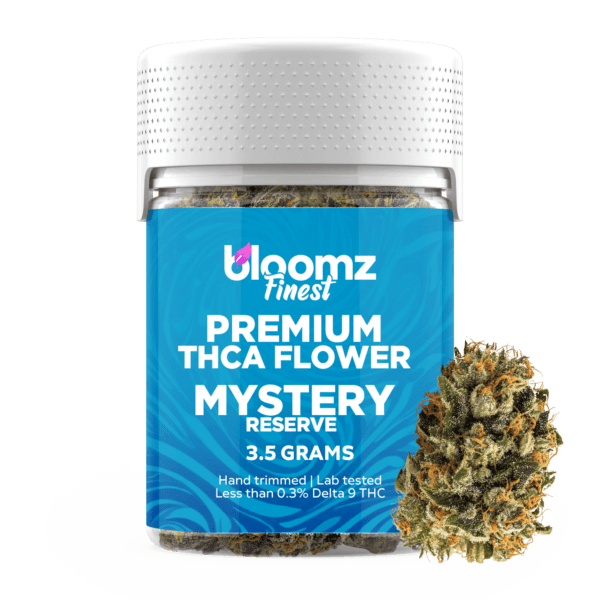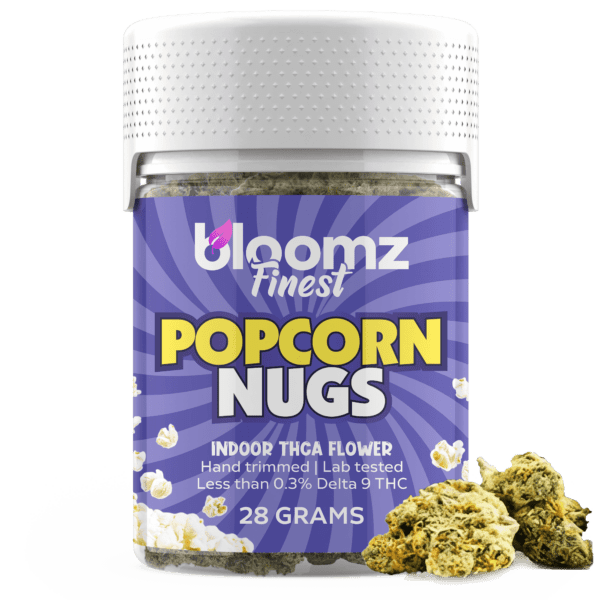In the vibrant and ever-expanding universe of hemp-derived products, a fundamental choice confronts both the curious newcomer and the seasoned connoisseur: to embrace a clever fusion of the traditional plant form with modern science, or to explore the very essence of that same plant, refined and amplified to its most powerful state. This decision charts a course between two distinct philosophies of consumption, each with its own unique rituals, sensations, and profound character. On one side of this great divide stands the innovative Delta 8 THC Flower, a product that marries the familiar, tactile experience of a botanical bud with the famously clear-headed effects of a lab-derived cannabinoid.
On the other side lies the dazzling and diverse world of concentrates, a testament to the alchemical power of extraction and purification, presenting the plant’s most potent compounds in a breathtaking variety of powerful and pristine forms. Navigating this choice is not merely about selecting a product; it is about defining an experience and aligning it with one’s own personal preferences for flavor, potency, and process.
TO BUY DELTA 8 THC FLOWER CLICK HERE
Recommended products
Why It’s Important to Breakdown the Matchup of Delta 8 THC Flower vs. Concentrates
A detailed and thorough breakdown of the matchup between the manufactured Delta 8 THC Flower and the vast world of concentrates is not just helpful; it is essential for empowering consumers to make a truly informed decision that resonates with their lifestyle and desired outcomes. The differences between these two categories are vast and fundamental, extending far beyond simple potency to encompass the entire user experience, from the necessary equipment and preparation to the very nature of the effects themselves.
Understanding these distinctions—the hybrid, full-plant experience of infused flower versus the powerful, direct, and targeted impact of a pure concentrate, the familiar ritual of smoking versus the modern precision of dabbing—allows an individual to tailor their journey with intention. This exploration is not about establishing a universal hierarchy of quality, but rather about illuminating the unique virtues and specific considerations of each path, ensuring every person can confidently select the form that best suits their needs.
This in-depth comparison is critical for several key reasons. Firstly, it addresses the significant difference in potency and the user’s tolerance. Concentrates can be three to four times more potent than even the strongest infused flower, a fact that is crucial for beginners to understand to ensure a comfortable experience. Secondly, the conversation must cover the vast disparity in required hardware and the associated learning curve. Consuming Delta 8 THC flower can be as simple as using a basic pipe, while properly consuming concentrates often requires specialized and sometimes intimidating equipment like a dab rig and torch.
Furthermore, the economic considerations are vastly different; while concentrates are more expensive per gram, their high efficiency means a small amount goes a very long way. By carefully dissecting these factors, along with nuances in flavor, onset time, and duration of effects, we provide a complete and transparent picture, transforming a potentially overwhelming choice into a clear and calculated personal decision.
Contender #1: Delta 8 THC Flower
In the innovative and rapidly evolving world of hemp products, Delta 8 THC flower stands out as a clever and popular hybrid creation. It represents a masterful fusion of the timeless, cherished form of the hemp plant with the advanced capabilities of modern cannabinoid science. This product is designed to appeal to those who love the classic ritual of handling and consuming flower—the grinding, the packing, the smoking or vaping—but who seek the specific, milder psychoactive experience offered by Delta 8 THC.
It is important to understand from the outset that Delta 8 flower is not a naturally occurring phenomenon; there is no hemp plant that grows buds rich in Delta 8 THC. Instead, it is a manufactured product, a testament to ingenuity where the natural and the scientific are artfully combined. It offers a bridge between two worlds, providing a familiar form factor while delivering a distinctly modern and sought-after effect, creating a unique category all its own.
Delta-8-Tetrahydrocannabinol (Delta 8 THC) is a fascinating and naturally occurring cannabinoid found in the cannabis and hemp plants, though it typically appears in only very small, trace amounts. It is an isomer of the more famous and abundant Delta 9 THC, which means they share the exact same chemical formula but have a slightly different molecular structure. The only difference lies in the placement of a specific double bond between their carbon atoms. In Delta 9 THC, this bond is on the ninth carbon chain, while in Delta 8 THC, it is on the eighth. This subtle yet critical structural difference has a profound impact on how the molecule interacts with the human body’s endocannabinoid system (ECS), particularly the CB1 receptors in the brain.
As a result, Delta 8 THC binds to these receptors less effectively than Delta 9 THC, which is why it produces a noticeably less potent psychoactive effect. Users widely report that the experience from Delta 8 is significantly more clear-headed, less edgy, and more body-focused, offering a gentle and functional euphoria without the intensity that can sometimes accompany its more powerful cousin.
This brings us to Delta 8 THC flower, which is a composite product created by taking high-quality, legally compliant hemp flower and infusing it with a potent Delta 8 THC distillate. In essence, it begins with a beautiful, aromatic, and cannabinoid-rich hemp bud—typically high in CBD or CBG—and then enhances it by adding a layer of pure Delta 8 THC. This process allows producers to offer a smokable flower that provides the unique effects of Delta 8, which would otherwise be impossible to achieve through cultivation alone, as the hemp plant does not naturally produce this cannabinoid in any significant quantity. The final product looks, smells, and feels very much like a traditional cannabis bud, but its psychoactive properties are derived entirely from the scientifically applied distillate.
Recommended products
The quality of the final product is therefore dependent on two key factors: the quality of the base hemp flower and the purity and application method of the Delta 8 THC distillate. The creation of this innovative product is a multi-stage manufacturing process that requires both agricultural excellence and laboratory precision. Basically, the journey from a simple hemp plant to a consumer-ready Delta 8 THC-infused bud follows a carefully orchestrated protocol:
Cultivation and Sourcing of Premium Hemp Flower: The foundation of any good Delta 8 flower is the base flower itself. Reputable producers start by cultivating or sourcing top-shelf hemp flower, typically strains that are rich in CBD or CBG and boast a desirable appearance, a dense bud structure, and a robust profile of natural terpenes. This flower must be fully compliant with the 2018 Farm Bill, containing less than 0.3% Delta 9 THC. The quality of this starting material is paramount, as its natural aroma and flavor will form the sensory backbone of the final product.
Creation of Pure Delta 8 THC Distillate: Since Delta 8 THC exists in such small quantities naturally, it must be created in a lab through a process called isomerization. This process typically starts with pure CBD isolate, which is extracted from legal hemp. The CBD isolate is then dissolved in a solvent and combined with an acid, which acts as a catalyst. This mixture is heated and agitated for a specific period, causing the CBD molecules to rearrange and convert into Delta 8 THC molecules. After the reaction is complete, the resulting crude oil must undergo an extensive process of washing, neutralization, and distillation to remove all residual solvents and acids, resulting in a pure, thick, and highly potent Delta 8 THC distillate.
The Infusion or Coating Process: This is the crucial step where the flower and the distillate are combined. The thick Delta 8 THC distillate is first gently heated to lower its viscosity and make it more workable. Then, one of several methods is used to apply it to the hemp flower. One common method is spraying, where the warm distillate is atomized and sprayed evenly over the buds. Another method is tumbling, where the buds are placed in a large tumbler that rotates slowly while the distillate is gradually introduced, ensuring a consistent and even coat. A more advanced method involves a cryogenic infusion, where the flower is frozen with liquid nitrogen before the distillate is applied, which helps the oil adhere without making the bud overly saturated or wet.
Final Curing and Third-Party Lab Testing: After the infusion process, the coated flower is allowed to cure. This final drying and resting period is essential to ensure that any residual solvents from the infusion process (if used) have fully evaporated and that the flower has a pleasant, non-sticky texture that is suitable for grinding and smoking. Finally, a sample from each batch of the finished Delta 8 flower is sent to an independent, third-party laboratory. This lab provides a Certificate of Analysis (COA) that verifies the final Delta 8 THC potency and confirms that the product is free from harmful contaminants like pesticides, heavy metals, and residual solvents from the isomerization process.
The market for Delta 8 THC flower offers a variety of options that are primarily distinguished by the quality of the base hemp flower used and the specific methods of infusion. Unlike with THCA flower, where terms like “indoor” and “outdoor” refer to how the psychoactive cannabinoid itself was grown, here these terms describe the cultivation method of the underlying, non-intoxicating hemp flower before it was treated with Delta 8. Understanding this distinction is key to navigating the different product tiers and finding the quality that best suits your preferences. From premium, visually stunning indoor buds to ultra-potent, multi-layered moonrocks, the variety allows for a wide range of experiences:
Indoor Delta 8 Flower: This represents the top-shelf category of Delta 8 flower. The process begins with premium, indoor-grown hemp flower, which is known for its perfect bud structure, dense trichome coverage, and rich terpene profile. This high-quality base is then carefully infused with pure Delta 8 distillate. The final product boasts the best of both worlds: the beautiful appearance and complex natural aroma of indoor-grown hemp, combined with the clear, uplifting effects of Delta 8 THC. This is the choice for connoisseurs who prioritize aesthetic quality and a robust, natural flavor profile.
Outdoor Delta 8 Flower: This category utilizes hemp flower that was cultivated in an outdoor environment. Outdoor-grown hemp often has larger, less dense buds with a more rustic appearance and an earthier terpene profile. While it may not have the same “bag appeal” as indoor flower, it provides a more cost-effective base material. Once infused with Delta 8 THC, this flower offers a more budget-friendly option for consumers who are primarily focused on the effects of the Delta 8 and are less concerned with the nuanced aesthetics of the bud itself.
Delta 8 Smalls: Similar to other types of flower, “smalls” are the smaller, popcorn-sized buds from the same high-quality plants that produce larger nugs. These smaller buds, whether from an indoor or outdoor crop, are collected and then infused with Delta 8 THC distillate. They offer the exact same potency and quality as their larger counterparts but at a more accessible price point, making them an excellent value for consumers who plan to grind their flower for use in joints, blunts, or vaporizers.
Delta 8 Nugs: This is the standard form of Delta 8 flower, referring to the full-sized, trimmed buds that have been infused. These nugs showcase the structure and quality of the base flower and provide the classic tactile experience of breaking down a bud by hand. This is the most common format and offers a great balance of quality, value, and user experience.
Delta 8 Moonrocks: This is an enhanced, triple-layered product designed for maximum potency. The creation of a Delta 8 moonrock is an intensive process. First, a premium nug of hemp flower is selected. Second, it is coated in a sticky layer of heated Delta 8 THC distillate. Third, while the distillate is still tacky, the entire bud is rolled in a generous amount of kief (the sifted trichomes from hemp flower, often high in CBD or CBG). This trifecta of flower, distillate, and kief results in an incredibly dense, potent, and slow-burning product that delivers a powerful and multi-layered cannabinoid experience.
Delta 8 Pre-Rolls, Blunts & Joints: For the ultimate in convenience, pre-rolled options are a popular choice. These products consist of ground-up Delta 8 THC flower that has been expertly packed into either standard rolling papers (joints) or larger, tobacco-free hemp wraps (blunts). This eliminates the need for the consumer to own a grinder, papers, or possess the skill of rolling, offering a ready-to-use, portable, and easily shareable format for a classic smoking experience.
The concept of “strains” when applied to Delta 8 THC flower is a nuanced and multi-layered topic. The final product’s character is a combination of two separate elements: the genetic strain of the base hemp flower and the psychoactive properties of the Delta 8 THC distillate that is applied to it. The base flower, which is typically a high-CBD or high-CBG strain, is chosen for its unique terpene profile, which dictates the product’s fundamental aroma and flavor. These terpene profiles are generally categorized into the three familiar classifications: Indica, Sativa, and Hybrid.
Recommended products
The experience is then shaped by the interaction between these natural terpenes and the distinct, clear-headed euphoria of the Delta 8 THC. This creates a unique synergy where the classic strain profiles you know and love are used to steer the gentle Delta 8 high in a specific direction:
Indica: For Indica-dominant Delta 8 flower, producers start with a hemp strain known for its relaxing and calming terpene profile, rich in compounds like myrcene and linalool. These strains often have earthy, sweet, or fruity aromas. When this terpene-rich flower is infused with Delta 8 THC, the result is an experience that is profoundly relaxing and tranquil. The clear-headed nature of the Delta 8 synergizes with the calming terpenes to produce a blissful, body-focused sensation that is perfect for unwinding in the evening without the heavy mental fog that can sometimes accompany more potent cannabinoids.
Sativa: To create a Sativa-dominant Delta 8 flower, the base material is a hemp strain that has been bred to produce an uplifting and energizing terpene profile, high in compounds like limonene and pinene. These strains typically boast bright, citrusy, or piney aromas. When this aromatic flower is combined with the Delta 8 distillate, the resulting effect is often described as stimulating, motivating, and cerebrally focused. It’s an ideal choice for daytime use, creative pursuits, or social activities, as it provides a gentle wave of euphoric energy and alertness.
Hybrid: Hybrid Delta 8 flower offers the most balanced and versatile experience. It starts with a base hemp strain that has been cross-bred to exhibit a well-rounded profile of both relaxing and uplifting terpenes. These strains can be Indica-dominant, Sativa-dominant, or a true 50/50 blend. Infusing these multifaceted flowers with Delta 8 THC creates a comprehensive effect that can provide a pleasant mental uplift alongside comfortable body relaxation. This adaptability makes hybrid Delta 8 flower a popular choice that can be enjoyed at almost any time of day.
Delta 8 THC flower’s legal status in the United States is one of the most complex and contentious issues in the entire hemp industry. At the federal level, its legality is derived from the 2018 Farm Bill. This legislation legalized hemp and all of its derivatives, isomers, and cannabinoids, with the explicit exception of Delta 9 THC, which must remain at or below a concentration of 0.3% by dry weight. Since Delta 8 THC is an isomer of THC derived from hemp (typically from hemp-derived CBD), proponents argue that it is federally legal under the plain text of the bill. This interpretation is what allowed for the explosion of the Delta 8 market in the first place.
However, this federal legality is far from secure and does not apply uniformly across the country. The Drug Enforcement Administration (DEA) has issued an Interim Final Rule suggesting that synthetically derived tetrahydrocannabinols remain scheduled substances, and since Delta 8 is created through a chemical process (isomerization), its status as “synthetic” is a point of fierce legal debate. More consequentially, a significant number of states have taken matters into their own hands.
Citing consumer safety concerns and the psychoactive nature of the compound, many state legislatures have passed specific laws that explicitly ban or heavily restrict the sale and possession of Delta 8 THC and other intoxicating isomers. This has created a fractured and confusing legal landscape where Delta 8 flower may be legal to purchase in one state but is considered an illegal substance in a neighboring one. Therefore, it is absolutely essential for consumers to research and verify the specific laws regarding Delta 8 THC in their own state before making a purchase.
Now, the versatility of Delta 8 THC flower allows it to be used in all the same ways as traditional cannabis or hemp flower, providing users with a range of consumption methods to fit their preferences, available equipment, and desired experience. Because it is a physical, plant-based product, it can be prepared and consumed through familiar, time-honored rituals. This versatility is a major part of its appeal, as it doesn’t require users to learn new techniques or purchase highly specialized equipment if they are already familiar with consuming flower.
Whether you prefer the classic act of smoking, the modern efficiency of vaping, or the long-lasting effects of edibles, Delta 8 flower can serve as the foundational ingredient for your chosen journey:
Vaping (using a portable or desktop vaporizer): For those who want to experience the flavor profile of the base hemp flower with greater clarity, vaporizing is an excellent option. Using a dry herb vaporizer, the Delta 8 flower is heated to a temperature that is hot enough to vaporize the Delta 8 THC and the terpenes, but not hot enough to cause combustion. This produces a smooth vapor instead of smoke, which is often considered less harsh on the lungs. This method is praised for its efficiency and for providing a cleaner taste that highlights the natural aromatic compounds of the underlying strain.
Smoking: This remains the most common and straightforward method of consuming Delta 8 flower. It involves grinding the buds and igniting them in a pipe, a water pipe (bong), or by rolling them into a joint or blunt. The act of smoking is a familiar and cherished ritual for many, offering an immediate onset of effects and a robust, full-bodied experience. While some of the more subtle terpenes can be lost to the high heat of combustion, the simplicity and classic nature of smoking make it an enduringly popular choice.
Cooking/Baking: Delta 8 flower can also be used to create homemade edibles, but the process requires a bit of care. While the Delta 8 THC on the flower is already active and does not require decarboxylation, the base hemp flower often contains other cannabinoids in their acidic form (like CBDA). To get the full spectrum of effects from the base flower, a gentle decarboxylation process (baking at a low temperature) is still recommended. After this step, the flower can be infused into a fat like butter or oil and used to cook or bake a wide variety of potent, long-lasting edibles.
The overall experience and effects of consuming Delta 8 THC flower are unique and multi-layered, resulting from the synergistic interplay between the base hemp flower and the infused Delta 8 distillate. When consumed, the user experiences the effects of both components simultaneously. The base flower, rich in CBD, CBG, and a diverse array of natural terpenes, contributes to the overall entourage effect. This can provide a sense of physical ease and well-being, while the specific terpene profile (Indica, Sativa, or Hybrid) guides the character of the experience, influencing its aroma, flavor, and whether it feels more relaxing or uplifting. This foundational layer provides the nuanced, full-plant benefits that many users seek from flower.
Layered on top of this is the distinct psychoactive effect of the Delta 8 THC. This manifests as a clear-headed, gentle euphoria that is noticeably less intense and cerebrally foggy than what is typically associated with Delta 9 THC. Many users describe it as a highly functional and pleasant buzz that allows them to remain focused and present while enjoying a blissful and relaxed state of mind. The combination of the two elements creates a beautifully balanced and well-rounded experience.
The calming properties of the CBD-rich flower can smooth out the psychoactive effects of the Delta 8, resulting in a “high” that is often described as exceptionally smooth, comfortable, and free from the edginess that some experience with more potent cannabinoids.
Pros & Cons
Like any innovative product, Delta 8 THC flower comes with its own unique set of advantages and potential drawbacks. Understanding this balance is key for any consumer looking to determine if this hybrid, manufactured form of flower is the right choice for their needs. The appeal of its milder, more functional high and familiar consumption ritual must be weighed against considerations about its manufactured nature and its precarious legal status in many regions.
Pros:
Milder, More Manageable High: The most celebrated advantage of Delta 8 THC is its lower psychotropic potency compared to Delta 9 THC. This results in a much more manageable and less overwhelming experience, making it an excellent choice for individuals who are sensitive to THC or for those who want a gentle euphoric lift without intense cerebral effects.
Clear-Headed and Functional Effects: Users consistently report that the Delta 8 high is remarkably clear-headed and functional. It tends to produce less mental fog and confusion than its more potent counterpart, allowing many users to remain focused, productive, and sociable while still enjoying a pleasant and blissful state of mind.
Familiar Consumption Ritual: For those who love the timeless act of smoking or vaping flower, Delta 8 flower offers the perfect delivery system. It allows users to enjoy the entire hands-on process—grinding the buds, packing a bowl, the tactile and aromatic experience—which is a cherished ritual that is lost with other consumption formats like edibles or tinctures.
Benefits of the Entourage Effect: Because Delta 8 flower uses a full-spectrum hemp flower as its base, it contains a wide array of other cannabinoids (like CBD and CBG) and natural terpenes. This allows the user to benefit from the entourage effect, where all the different plant compounds work in synergy to create a more balanced, nuanced, and holistic experience.
Federally Legal (with Caveats): Under the 2018 Farm Bill, Delta 8 THC derived from hemp is considered federally legal, which has made it accessible to a wide audience in states that have not specifically banned it. This provides a legal avenue for many people to experience a form of THC who do not live in states with adult-use cannabis programs.
Less Pronounced Side Effects: Many users report that Delta 8 THC is less likely to induce the feelings of edginess, paranoia, or a racing heart that can sometimes be unwanted side effects of high doses of Delta 9 THC. This makes for a more consistently comfortable and relaxing experience for a wider range of people.
Variety of Strain Profiles: Since Delta 8 flower can be made from any strain of high-quality hemp flower, consumers have access to a wide variety of underlying terpene profiles. This allows you to choose from Indica, Sativa, and Hybrid options to tailor the flavor and the subtle character of your experience to your preference.
Great for Social Situations: The functional and clear-headed nature of the Delta 8 high makes it a fantastic choice for social gatherings. It can help to elevate the mood and encourage conversation without the potential for social withdrawal or the intensity that might make some users feel uncomfortable around others.
Good Stepping Stone: For individuals who are curious about THC but are intimidated by the potency of traditional cannabis, Delta 8 flower serves as an excellent introductory product. It provides a gentle and forgiving way to explore the world of psychoactive cannabinoids and understand one’s own tolerance and preferences.
Combines Relaxation with Euphoria: The synergistic effect of the CBD-rich base flower and the Delta 8 THC distillate creates a beautifully balanced experience. It often results in a feeling that is both physically relaxing and mentally euphoric, a best-of-both-worlds sensation that many users find to be incredibly pleasant and desirable.
Cons:
Manufactured, Not Naturally Grown: This is a significant drawback for purists. Delta 8 flower is not a product of natural cultivation; it is a composite product where a lab-created distillate is applied to a separate flower. This lack of natural cohesion can be unappealing to those who prefer their products to be as close to their original plant form as possible.
Potential for Uneven Coating: Depending on the quality of the manufacturer’s infusion process, the Delta 8 distillate may not be applied completely evenly across all the buds. This can lead to inconsistencies in potency, where one nug might be more potent than another from the same batch, making precise dosing a challenge.
Can Be Harsh to Smoke: The addition of a layer of sticky distillate to the outside of the flower can sometimes result in a harsher and less pleasant smoking experience compared to natural, untreated flower. Some users find that the smoke can be heavier and more likely to induce coughing.
Precarious and Unstable Legal Status: While federally legal under a certain interpretation of the Farm Bill, Delta 8 THC is explicitly banned or restricted in a growing number of states. This creates a confusing and risky legal landscape for consumers, and the long-term legal viability of the product remains uncertain at the federal level.
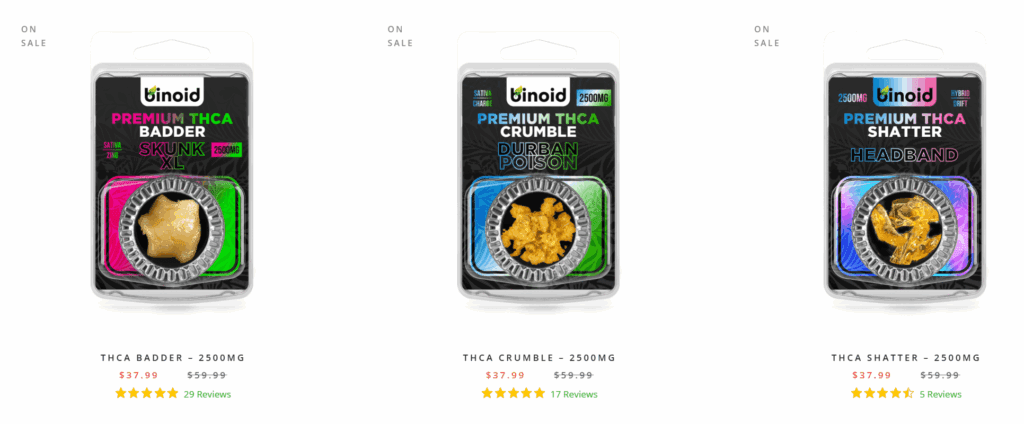
Contender #2: Concentrates
Welcome to the dazzling and dynamic world of the modern alchemist, where botanical science, advanced chemistry, and sophisticated technology converge to create the powerful products known as hemp concentrates. This category represents the very soul of the plant, its essence captured, purified, and amplified to an incredible degree. If Delta 8 flower is a clever and enjoyable remix of a classic song, then concentrates are the pure, isolated vocal and instrumental tracks, meticulously separated and mastered to deliver a profound impact with breathtaking efficiency and clarity. This diverse and fascinating family of products is the result of a singular goal: to strip away all the excess and inert plant material—the leaves, stems, waxes, and lipids—in order to isolate the cannabinoid- and terpene-rich trichome glands.
The result is a product that is significantly more potent than raw flower, offering an experience that is characterized by its intensity, its unparalleled purity of flavor, and its incredibly rapid onset. For many, concentrates represent the next frontier of the hemp experience, serving not only as a powerful end product but also as the foundational ingredient for nearly every other modern hemp product, from vape oils to edibles, and opening the door to a new level of appreciation and a different kind of ritual.
To start, cannabinoids are the naturally occurring chemical compounds within the hemp plant that are responsible for its wide array of effects. They achieve this by interacting with the human body’s endocannabinoid system (ECS), a complex network of receptors that helps regulate various physiological processes. The world of concentrates is built upon isolating these powerful molecules. Modern extraction technologies allow producers to not only pull these compounds from the plant but also to isolate specific ones and even convert them into other, rarer cannabinoids.
This scientific manipulation has created an incredible toolbox for formulators, allowing them to create concentrates with highly specific and targeted effect profiles. The cannabinoids most commonly found in today’s concentrates can be broadly grouped by their general psychoactive potency:
Non-Intoxicating: This group includes cannabinoids that do not produce the euphoric or “high” feeling associated with THC. Cannabidiol (CBD) is the most well-known, celebrated for its potential to promote a sense of calm and well-being. Cannabinol (CBN) is often found in concentrates designed for relaxation, while Cannabigerol (CBG) is valued for its unique properties as the “mother” cannabinoid from which others are formed.
Mild Potency: This category is perfect for those seeking a more functional and less intense psychoactive experience. Delta 10 THC is a prime example, known for delivering a clear-headed, uplifting, and energizing effect that is often compared to a Sativa strain, making it a popular choice for daytime use when focus and creativity are desired.
Moderate Potency: This group contains the most well-known and traditionally sought-after cannabinoids. Delta 9 THC is the benchmark for classic psychoactive effects. Delta 8 THC offers a milder, more body-focused version of that experience. THCA is the star player in many “raw” concentrates like diamonds and live resins, as it remains non-intoxicating until it is heated during consumption, at which point it converts into potent Delta 9 THC.
Strong Potency: Representing the cutting edge of cannabinoid science, this group features compounds known for their exceptionally high potency, intended for experienced users. THC-P (Tetrahydrocannabiphorol) has a much stronger binding affinity for the body’s receptors than Delta 9 THC, making it many times more potent. HHC (Hexahydrocannabinol) is a hydrogenated form of THC, known for its chemical stability and Delta 9 THC-like effects. These cannabinoids deliver a powerful and profound level of euphoria.
Just as with flower, the concepts of Indica, Sativa, and Hybrid are absolutely fundamental to the world of concentrates, serving as the primary guideposts for consumers to anticipate the character of a product’s effects. However, the way a strain’s profile is expressed in a concentrate is even more pronounced and pure than in flower. The extraction process, by removing all the plant material, eliminates the flavors of combustion like burning leaves and chlorophyll, allowing the strain’s unique terpene profile to shine through with unparalleled clarity.
Whether a concentrate is made from the following will dictate its core identity, from its specific aroma and taste to the very nature of the experience it provides, be it deeply relaxing, creatively stimulating, or a harmonious balance of both:
Indica: Concentrates extracted from Indica-dominant strains are prized for their ability to deliver profound feelings of physical relaxation, tranquility, and serene bliss. The extraction process captures and concentrates terpenes like myrcene, linalool, and beta-caryophyllene, which are associated with calming and soothing effects. An Indica-based concentrate, such as a rosin pressed from an Ice Cream Cake strain, will offer a pure expression of that strain’s earthy, sweet, and relaxing qualities, making it an ideal choice for unwinding in the evening or settling into a state of deep, chilled-out comfort.
Sativa: Sativa-dominant concentrates are the go-to choice for users seeking an energizing, uplifting, and cerebrally-focused experience. The extraction process preserves and amplifies the bright, zesty terpenes like limonene and pinene, which are associated with mood elevation and alertness. A Sativa-based concentrate, such as a live resin extracted from a Sour Diesel strain, will provide a powerful and pure taste of citrus and fuel, accompanied by a wave of euphoric and creative energy. These concentrates are perfect for daytime use, artistic endeavors, or social situations.
Hybrid: Hybrid concentrates offer the best of both worlds, capturing the most desirable traits from their blended Indica and Sativa parentage. The resulting experience can be incredibly nuanced and multi-faceted, providing a balanced effect that can be enjoyed at any time of day. A Hybrid concentrate, such as a badder made from the GSC strain, can deliver a powerful initial wave of cerebral euphoria followed by a comfortable and relaxing body sensation. This versatility and the wide spectrum of possible effects make hybrids the most popular and diverse category in the world of concentrates.
So, at their most fundamental level, hemp/cannabis concentrates are exactly what their name implies: products in which the most desirable parts of the cannabis plant—the cannabinoids and terpenes—have been concentrated into a much smaller, more potent form. This is achieved through a variety of extraction processes that are designed to separate the resinous trichome glands from the less desirable plant material, such as leaves, stems, and stalks. The result is a product that can have a cannabinoid content ranging from 60% to over 99%, compared to the 15-30% range typically found in high-quality flower.
This process of purification and amplification is the defining characteristic of all concentrates. The methods used to achieve this separation fall into two main categories: solvent-based extraction and solventless extraction. Solvent-based methods use a chemical like butane, propane, or CO2 to dissolve the trichomes off the plant, while solventless methods use mechanical forces like heat, pressure, or agitation in ice water. This distinction is one of the most important factors in determining the final product’s character and purity.
The world of concentrates is a dazzling and often confusing landscape of different names, textures, and consistencies. While the variety can seem overwhelming, these differences are primarily the result of the specific extraction method used and the post-extraction techniques applied to the final product. Understanding these key types is the first step to becoming a knowledgeable concentrate consumer. It is also important to note that the term “Dabs” is not a specific type of concentrate itself, but rather a colloquial term for any concentrate that is consumed via a process called “dabbing,” which involves vaporizing the product on a hot surface:
Resin: This is a broad term for the sticky substance produced in the plant’s trichomes. In the context of concentrates, “resin” typically refers to a hydrocarbon extract made from dried and cured cannabis flower. It is a cost-effective and common type of concentrate, but it can sometimes lack the vibrant terpene profile of extracts made from fresh material. A more desirable form is Live Resin, which is made from plant material that was flash-frozen immediately at harvest, preserving a much wider and more authentic spectrum of terpenes, resulting in a significantly more flavorful and aromatic product.
Rosin: One of the most popular forms of solventless extract, it’s created by taking cannabis flower, kief, or hash and subjecting it to immense heat and pressure using a specialized rosin press. This simple mechanical process squeezes the resinous sap directly from the plant material without the use of any chemicals, resulting in an incredibly pure and clean final product. Similar to resin, Live Rosin is considered the premium version, created by pressing bubble hash that was made from fresh-frozen plant material, yielding the most flavorful and potent solventless experience possible.
Bubble Hash: Also known as ice water hash, this is another premier solventless concentrate. It is made by agitating cannabis plant material in a vessel of ice-cold water. The freezing temperatures cause the brittle trichome heads to snap off and separate from the plant. This trichome-rich water is then poured through a series of filtered bags with progressively finer mesh screens, which catch the trichomes while allowing the water and plant matter to pass through. The final product is a potent, sand-like concentrate that can be pressed into rosin or consumed as is.
Wax: A general term for opaque, soft concentrates that are not translucent like shatter. This consistency is achieved by whipping the extract during the purging process, which incorporates air and results in a cloudy, wax-like texture. Wax is a category that contains several more specific consistencies:
Shatter: This is one of the most iconic forms of concentrate, known for its brittle, glass-like consistency. It is typically translucent and amber or gold in color. Shatter is made using a solvent-based extraction method, and the key to its texture is that it is left undisturbed during the final purging process. While visually appealing, its hard texture can sometimes make it difficult to handle, as it can shatter into small pieces when portioned out.
Badder / Budder: These concentrates have a much softer, more malleable consistency, similar to cake batter, thick frosting, or butter. This texture is achieved by whipping the extract at a specific temperature during the purging process. The result is an opaque, creamy concentrate that is very easy to scoop and handle with a dab tool, making it one of the most popular and user-friendly consistencies on the market.
Crumble: A drier, more brittle version of wax. It has a honeycomb-like or crumbly texture that easily breaks apart. This consistency is achieved by using lower temperatures and longer vacuum purging times, which removes more moisture and results in a less viscous, more solidified final product. While potent, its crumbly nature can sometimes make it a bit challenging to handle without it breaking into small pieces.
Diamonds: Often considered the “caviar” of concentrates, diamonds are crystalline structures of nearly pure, isolated THCA (or sometimes other cannabinoids like CBDA). The process involves using a solvent to create a supersaturated solution of cannabinoids, which, under specific conditions of temperature and pressure over a period of weeks, will cause the THCA to crystallize and form solid “diamonds.” These are incredibly potent but lack flavor on their own.
Crystalline: This is the purest form of a concentrate available, consisting of a single, isolated cannabinoid in its crystalline form. Products like THCA Crystalline or CBD Isolate are fine white powders that can reach over 99.9% purity. While they offer the highest potency of a single molecule, they contain no terpenes and therefore lack any flavor, aroma, or the synergistic benefits of the entourage effect. They are often used as a base ingredient to add potency to other products.
The legal status of hemp-derived concentrates in the United States is governed by the same federal law that applies to THCA flower: the 2018 Farm Bill. This legislation legalized hemp and its derivatives, defining them as any product sourced from the Cannabis sativa L. plant that contains a Delta 9 THC concentration of not more than 0.3% by dry weight.
This has created a legal pathway for the production and sale of a wide variety of concentrates, especially those that are high in THCA or alternative cannabinoids like Delta 8 THC and HHC. As long as the source material is compliant hemp and the final product’s Delta 9 THC level remains below the 0.3% threshold, these concentrates are considered federally legal. For a product like THCA diamonds, which is over 99% pure THCA with almost no Delta 9 THC, this is a straightforward issue of compliance.
However, the application of the “dry weight basis” rule to a viscous, non-dry product like an oil or wax is a subject of legal ambiguity and varying interpretation. Furthermore, the legal landscape is significantly complicated by a patchwork of state-level laws. In response to the rise of intoxicating hemp products, many states have enacted their own, more restrictive regulations. Some states have banned specific cannabinoids like Delta 8 THC outright, while others have adopted a “total THC” standard, which would make high-THCA concentrates illegal within their borders.
This creates a confusing and inconsistent legal environment where a product may be legal at the federal level but illegal in a specific state. Therefore, it is absolutely essential for consumers to thoroughly research and understand the laws in their own state before purchasing or possessing any hemp-derived concentrates.
The overall effects of consuming hemp concentrates are defined by two key characteristics: intensity and immediacy. Due to their incredibly high concentration of cannabinoids, the experience delivered by even a small amount of concentrate is significantly more powerful than that of flower. The onset of effects, particularly when using an inhalation method like dabbing, is almost instantaneous.
The vaporized cannabinoids are absorbed directly into the bloodstream through the lungs, reaching the brain within seconds and producing a rapid and profound shift in consciousness. This can manifest as a powerful wave of euphoria, a deep and enveloping sense of relaxation, or a vibrant surge of creative energy, depending entirely on the cannabinoid and terpene profile of the specific concentrate being used.
The purity of concentrates also leads to a “cleaner” experience in terms of flavor. Because all of the extraneous plant matter has been removed, the taste is a direct expression of the strain’s terpene profile, without any of the smoky, ashy, or green flavors associated with combustion. A high-quality live rosin, for example, will taste exactly as the fresh plant smells—a pure, unadulterated burst of citrus, pine, or fruit. The duration of the effects can vary, but the initial peak from dabbing is often more intense but slightly shorter-lived than the experience from smoking flower.
For beginners, it is crucial to start with the smallest possible amount, as the sheer potency can be overwhelming if not approached with caution and respect. The importance of temperature control, especially “low-temp dabbing”, cannot be overstated, as it allows for the full vaporization of terpenes without scorching them, leading to a much smoother and more flavorful experience.
Pros & Cons
The world of concentrates offers a powerful and efficient way to experience the hemp plant, but it comes with a unique set of advantages and challenges. Evaluating these pros and cons is essential for anyone considering venturing beyond traditional flower. The appeal of their immense potency and pure flavor must be weighed against the significant learning curve and the specialized equipment often required for their consumption.
Pros:
Unmatched Potency and Efficiency: This is the most significant advantage of concentrates. With cannabinoid levels often exceeding 80%, a very small amount of product is needed to achieve a powerful effect. This efficiency makes them a preferred choice for experienced users or those who have developed a higher tolerance and are seeking a more profound experience.
Rapid and Powerful Onset of Effects: For individuals seeking immediate results, concentrates are unparalleled. Methods like dabbing deliver a potent dose of cannabinoids to the system almost instantly, providing a rapid and intense wave of effects. This can be particularly desirable for those who want to achieve their desired state of mind quickly and effectively.
Purity of Flavor: By removing all the combustible plant material, concentrates offer the purest expression of a strain’s terpene profile. The flavor is clean, vibrant, and unadulterated by the taste of smoke, allowing connoisseurs to appreciate the subtle and complex notes of citrus, pine, earth, or fruit in a way that is simply not possible with flower.
Increased Discretion (Vapor): While the process of dabbing at home is not discreet, the vapor produced by concentrates has a much milder and less lingering odor than the smoke from flower. The smell is primarily that of the terpenes and dissipates very quickly, making it a more considerate option for those in shared living spaces.
Versatility in Consumption: Concentrates can be consumed in a variety of ways. They can be vaporized in a dab rig, used in a portable electronic vape pen or “nectar collector,” or even added to a bowl or joint of flower to significantly boost its potency and flavor. This versatility allows users to tailor their consumption method to their situation.
Economical in the Long Run: While the upfront cost per gram of a concentrate is much higher than that of flower, its incredible potency means that it is consumed in much smaller quantities. For a regular user, a single gram of concentrate can last as long as, or even longer than, an eighth of an ounce (3.5 grams) of flower, making it a potentially more economical choice over time.
Precise Dosing Potential: Unlike flower, where potency can vary slightly from bud to bud, concentrates offer a homogenous and consistent product. This makes it easier to achieve precise and repeatable dosing, especially when using an electronic device or carefully measuring out portions for a dab rig.
Less Inhalation of Combusted Material: When vaporized properly, concentrates allow the user to inhale pure cannabinoids and terpenes without the tar and carcinogens associated with burning plant matter. For health-conscious individuals, this can be a major deciding factor when choosing between concentrates and traditional smoking.
Long Shelf Life: Due to their low content of organic plant matter, concentrates are very stable and have a much longer shelf life than flower. When stored properly in an airtight, lightproof container, they can maintain their potency and flavor for a very long time without degrading.
Wide Variety of Textures and Experiences: The vast array of different concentrate consistencies—from glassy shatter to creamy budder—provides a rich and varied tactile experience for the user. Exploring these different textures and the subtle nuances they bring to the consumption ritual is a major part of the appeal for many enthusiasts.
Cons:
High Barrier to Entry and Equipment Cost: This is a significant hurdle for newcomers. Proper consumption of many concentrates, especially dabbing, requires a specialized and often expensive setup, including a dab rig, a quartz banger or nail, a torch, and various tools. This upfront investment and the complexity of the equipment can be intimidating.
Steep Learning Curve: The process of dabbing is not as intuitive as simply lighting a bowl. It requires learning how to properly heat the nail to the correct temperature, handle the sticky concentrate with a tool, and inhale the vapor effectively. Overheating the nail can destroy terpenes and result in a harsh experience, while underheating it can waste the product.
Can Be Overwhelming for Beginners: The extreme potency of concentrates can easily lead to an uncomfortably intense experience for new or low-tolerance users. It is very easy to consume too much, too quickly, which can result in feelings of being overwhelmed. A “start low and go slow” approach is absolutely essential.
Potential for Rapid Tolerance Increase: Due to the highly concentrated doses of cannabinoids delivered by concentrates, regular use can lead to a rapid increase in the user’s tolerance. This means that over time, larger and larger doses may be needed to achieve the same desired effect, and the effects of lower-potency products like flower may become diminished.
How to Go About Choosing Which Option
Navigating the choice between the familiar, infused comfort of Delta 8 THC flower and the potent precision of concentrates is a journey of self-discovery, guided by personal preference, lifestyle, and experience level. There is no single “better” product, only the one that aligns most harmoniously with your individual needs and intentions. To make an informed decision, it is crucial to conduct an honest self-assessment.
Consider your tolerance and experience: are you a newcomer seeking a gentle introduction, or are you a seasoned user in search of a more powerful effect? Think about your budget and your willingness to invest in new, specialized equipment. Reflect on what you value most in the experience: is it the holistic, sensory ritual of handling a plant-like product, or the clean, efficient, and intense experience of its purified essence?
To further simplify the decision-making process, consider the following key points:
Potency and Tolerance: This is the most critical factor. If you are a beginner or have a low tolerance, Delta 8 flower, with its milder and more forgiving effects, is the much more appropriate starting point. Concentrates are best reserved for experienced users who understand their high tolerance and are specifically seeking a high-potency experience.
Budget and Equipment: Delta 8 flower can be consumed with simple, inexpensive accessories that many people already own. Concentrates, especially for dabbing, require a significant upfront investment in a rig, torch, and tools. Consider whether you are prepared to make that investment in what can be a new hobby.
The Desired Ritual: Do you enjoy the hands-on process of grinding flower, packing a bowl, and the entire sensory experience that comes with it? Or do you prefer a more modern, scientific, and precise ritual that focuses on efficiency and purity? The former points to Delta 8 flower, the latter to concentrates.
Flavor Profile: Are you seeking a complex flavor that combines the natural terpenes of a base hemp flower with the unique character of Delta 8? Or do you desire the ultra-clean, pure expression of a strain’s terpenes without any competing tastes? Delta 8 flower provides a “hybrid” flavor, while concentrates offer “pure terpene” flavor.
Legal Considerations: In some states, the legal status of Delta 8 THC is more precarious than that of other hemp-derived cannabinoids. It’s possible that in your specific location, certain concentrates (like those high in THCA) may be legal while Delta 8 products of any kind are not. Always verify your local laws.
|
Feature |
Delta 8 THC Flower |
Concentrates |
|---|---|---|
|
Product Nature |
Manufactured (Hemp Flower + D8 Distillate) |
Extracted (Purified Cannabinoids & Terpenes) |
|
Primary Appeal |
Familiar Ritual & Milder High |
Unmatched Potency & Purity |
|
Potency Level |
Moderate |
Very High to Extreme (60-99%+) |
|
Best For… |
Beginners to Intermediate Users |
Experienced, High-Tolerance Users Only |
|
Equipment Needed |
Simple (Pipe, Papers, etc.) |
Complex (Dab Rig, Torch, etc.) |
|
Upfront Cost |
Low |
High |
|
Flavor Profile |
Hybrid (Base Flower + D8) |
Pure Terpenes, Clean, Intense |
|
The Ritual |
Hands-On, Traditional, Familiar |
Scientific, Precise, Modern |
|
Learning Curve |
Very Low |
Very High |
|
Tolerance Impact |
Moderate Increase |
Rapid Increase |
The Alchemist’s Table: Choosing Your Essence
The choice between an infused Delta 8 THC flower and a purified concentrate is not merely a practical decision; it is a reflection of the experience one seeks to cultivate. It is the choice between a clever hybridization that honors a timeless form, and the pure, unadulterated essence of the plant’s most powerful components. One path offers the comfort of a familiar ritual, enhanced by the clear and gentle touch of modern science. The other offers a journey into the heart of potency, a direct and powerful communion with the plant’s core, guided by the precise hand of the extractor.
Ultimately, neither path is superior. The true art lies in understanding your own desires, respecting your limits, and choosing the form—be it the infused bud or the golden resin—that will best allow you to explore the vast and wonderful landscape of personal bliss.
TO BUY DELTA 8 THC FLOWER CLICK HERE
Recommended products
-
THCA Flower – Platinum Line
$49.99$79.99 -
THCA Flower – Indoor Exotics – Gold Line
$37.99$69.99 -
THCA Flower – Mystery Reserve
$41.99$79.99 -
THCA Smalls
$149.99$256.99

